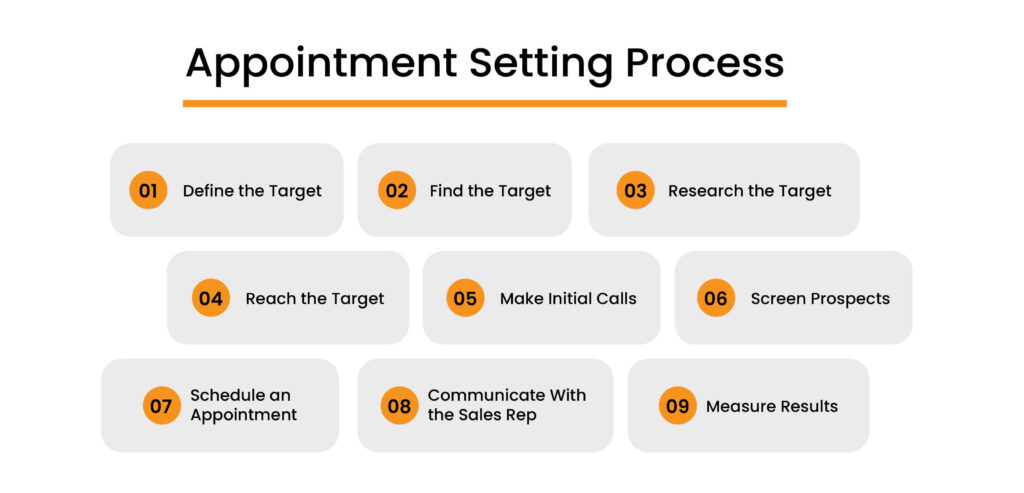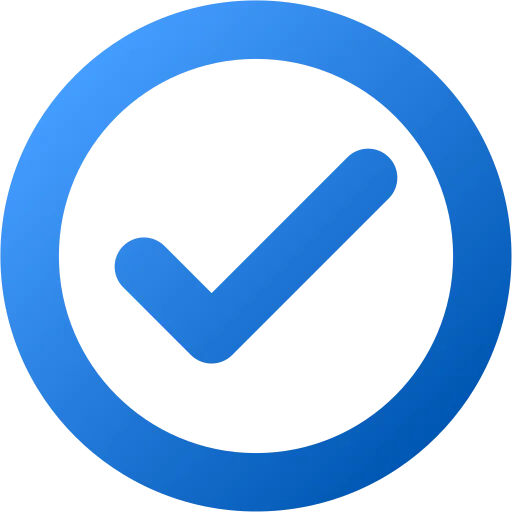
Are you seeking to flood your B2B marketing and sales pipeline with plenty of leads?
Of course, without filling the pipeline, pursuing potential sales becomes nearly impossible. Yet, the common pitfall is that companies often prioritize the end result – sales – without focusing on what happens after generating leads.
So, how do you keep the leads moving towards the other end of the funnel?
B2B appointment setting holds the key. It’s all about moving qualified leads to the next level, where they engage with sales representatives to convert opportunities.
This blog discusses the best approach to developing an appointment-setting funnel. So, let’s delve in:
Understanding the Appointment Setting Funnel:
Table of Contents
- 1 Understanding the Appointment Setting Funnel:
- 2 The Journey of a Lead in the Appointment Setting Funnel:
- 3 Optimizing the Appointment Setting Funnel:
- 4 Best Practices and Advanced Strategies:
- 5 Frequently Asked Questions (FAQs):
- 5.0.0.1 Question 1. What is an appointment-setting funnel?
- 5.0.0.2 Question 2. How does an appointment setting funnel work?
- 5.0.0.3 Question 3. Why is an appointment setting funnel important for B2B sales?
- 5.0.0.4 Question 4. What are the key components of an appointment setting funnel?
- 5.0.0.5 Question 5. How can I optimize my appointment setting funnel for better results?
- 6 Key Takeaways:
The appointment setting funnel serves as the backbone of any successful B2B sales operation, providing a structured approach to lead generation and conversion. At its core, the funnel comprises multiple stages, each designed to nurture prospects and guide them towards scheduling a sales appointment.
Must Read: The Art of Qualified Appointment Setting: Strategies to Secure High-Value Meetings
The Journey of a Lead in the Appointment Setting Funnel:
The journey begins by attracting qualified leads – prospects who have expressed interest in your product or service and are ripe for further engagement. From there, leads are captured through various channels such as content marketing, social media, and networking events,
Once leads are in hand, the focus shifts to nurturing them through personalized communication and valuable content. This nurturing process helps build trust and credibility with prospects, laying the groundwork for successful sales interactions.
As leads progress through the funnel, they undergo qualification to ensure they align with your ideal customer profile and are ready for a sales appointment. Finally, the funnel culminates in scheduling appointments – the ultimate goal of the process.
Must Read: Difference Between Lead Genration and Appointment Setting
Optimizing the Appointment Setting Funnel:

To maximize the effectiveness of the appointment setting funnel, it’s essential to continuously optimize and refine your approach. This involves tracking key metrics, analyzing performance data, and identifying areas for improvement.
A/B testing can be a valuable tool for optimizing your funnel and identifying what resonates most with your target audience. By testing different messaging, offers, and tactics, you can determine what drives the best results and refine your approach accordingly.
Moreover, leveraging automation can streamline your appointment setting process and increase efficiency. By automating repetitive tasks such as follow-up emails, scheduling reminders, and updating lead statuses, you can free up valuable time for your sales team to focus on high-value activities.
Must Read: Avoid Making These B2B Appointment Setting Mistakes — Or Your Sales Funnel Will Collapse
Best Practices and Advanced Strategies:
In addition to the fundamental elements of the appointment-setting funnel, there are several best practices and advanced strategies that can further enhance your results.
For example, segmenting your audience based on demographics, behavior, or engagement level can help deliver more targeted and personalized messaging.
Furthermore, implementing advanced personalization techniques such as dynamic content and predictive analytics can take your appointment-setting funnel to the next level.
By delivering hyper-personalized experiences based on individual preferences and behaviors, you can create a seamless and tailored journey that resonates with prospects and drives higher conversion rates.
Must Read: How To Reach Decision-Makers & Get Appointments
Frequently Asked Questions (FAQs):
Question 1. What is an appointment-setting funnel?
Answer: An appointment setting funnel is a structured framework used in B2B sales to guide prospects from initial contact to scheduling a sales appointment.
Question 2. How does an appointment setting funnel work?
Answer: It works by systematically nurturing prospects through stages like lead attraction, capture, nurture, qualification, and appointment scheduling to drive conversions.
Question 3. Why is an appointment setting funnel important for B2B sales?
Answer: It’s crucial for efficiently managing the sales pipeline, increasing efficiency, and ultimately driving more appointments and conversions.
Question 4. What are the key components of an appointment setting funnel?
Answer: Components include lead attraction, capture, nurture, qualification, and appointment scheduling, each playing a critical role in guiding prospects.
Question 5. How can I optimize my appointment setting funnel for better results?
Answer: Optimize by tracking metrics, leveraging A/B testing, implementing automation, and utilizing advanced personalization techniques.
Key Takeaways:
When optimizing your sales funnel, remember that there’s no one-size-fits-all strategy. Optimization is an ongoing process. Analyze your funnel, identify issues, optimize, and iterate. Discover what works and what doesn’t, and craft a funnel that converts leads faster.
Do you have any queries? Or are you looking for the best strategy to update your funnel? Whatever it is, please don’t hesitate to reach out to us! We’re here to help you optimize your sales process and drive better results.

Vikas Bhatt is the Co-Founder of ONLY B2B, a premium B2B lead generation company that specializes in helping businesses achieve their growth objectives through targeted marketing & sales campaigns. With 10+ years of experience in the industry, Vikas has a deep understanding of the challenges faced by businesses today and has developed a unique approach to lead generation that has helped clients across a range of industries around the globe. As a thought leader in the B2B marketing community, ONLY B2B specializes in demand generation, content syndication, database services and more.


